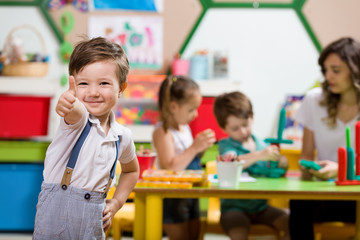20 Jul Ways to Teach Your Child Good Manners
Posted at 09:36h
in
Uncategorized
by admin
Modeling behaviors is the best way to teach your child good manners .Every parent dreams of the polite little child who says “please” and “thank you.” After all, your child’s behaviour reflects on you.
Expect Respect
The root of good manners is respect for another person; and the root of respect is sensitivity. Sensitivity is one of the most valuable qualities you can instill into your child — and it begins in infancy. The sensitive infant will naturally become the respectful child who, because he cares for another’s feelings, will naturally become a well-mannered person.
Teach polite words early
Even two-year-olds can learn to say “please” and “thank you.” Even though they don’t yet understand the social graciousness of these words, the toddler concludes that “please” is how you get what you want and “thank you” is how you end an interaction. When you ask your toddler to give you something, open with “please” and close with “thank you.” Children parrot these terms and understand their usefulness long before they understand their meaning.
Model Manners
From age two to four, what Johnny hears, Johnny says. Let your child hear a lot of “please,” “thank you,” “you’re welcome,” and “excuse me” as you interact with people throughout the day. And address your little person with the same politeness you do an adult. Let your child catch the flavor of polite talk.
Teach Name-calling
Always make it a point of opening each request by using the name of the child: “Jim, will you do this for me?” It’s not surprising to say that kids timed their approach for the right moment, looked at us in the eye or touched our arm, addressed us as “Mom, Ma’am, Dad, …,” and add a “please” or “may I,” they would just get about anything they want.
Acknowledge the child
The old adage “children should be seen and not heard” was probably coined by a childless person. Including the child in adult surroundings teaches social skills, and acknowledging their presence shows them that they have values.
Stay connected with your child in situations that put them at risk for undesirable behaviour. During a visit with other adults, keep your younger child physically close to you (or you stay close to him) and maintain frequent verbal and eye contact.
Don’t force manners
Language is a skill to be enjoyed, not forced. While it’s okay to occasionally dangle a “say please” over a child before you grant the request don’t, like pet training, rigidly adhere to asking for the “magic word” before you give your child what he wants. Be sure he hears a lot of good speech from you. Overdo politeness while you’re teaching it and he’ll catch the idea faster. “Peas” with a grin shows you the child is feeling competent in her ability to communicate.
Aruna Dang




No Comments